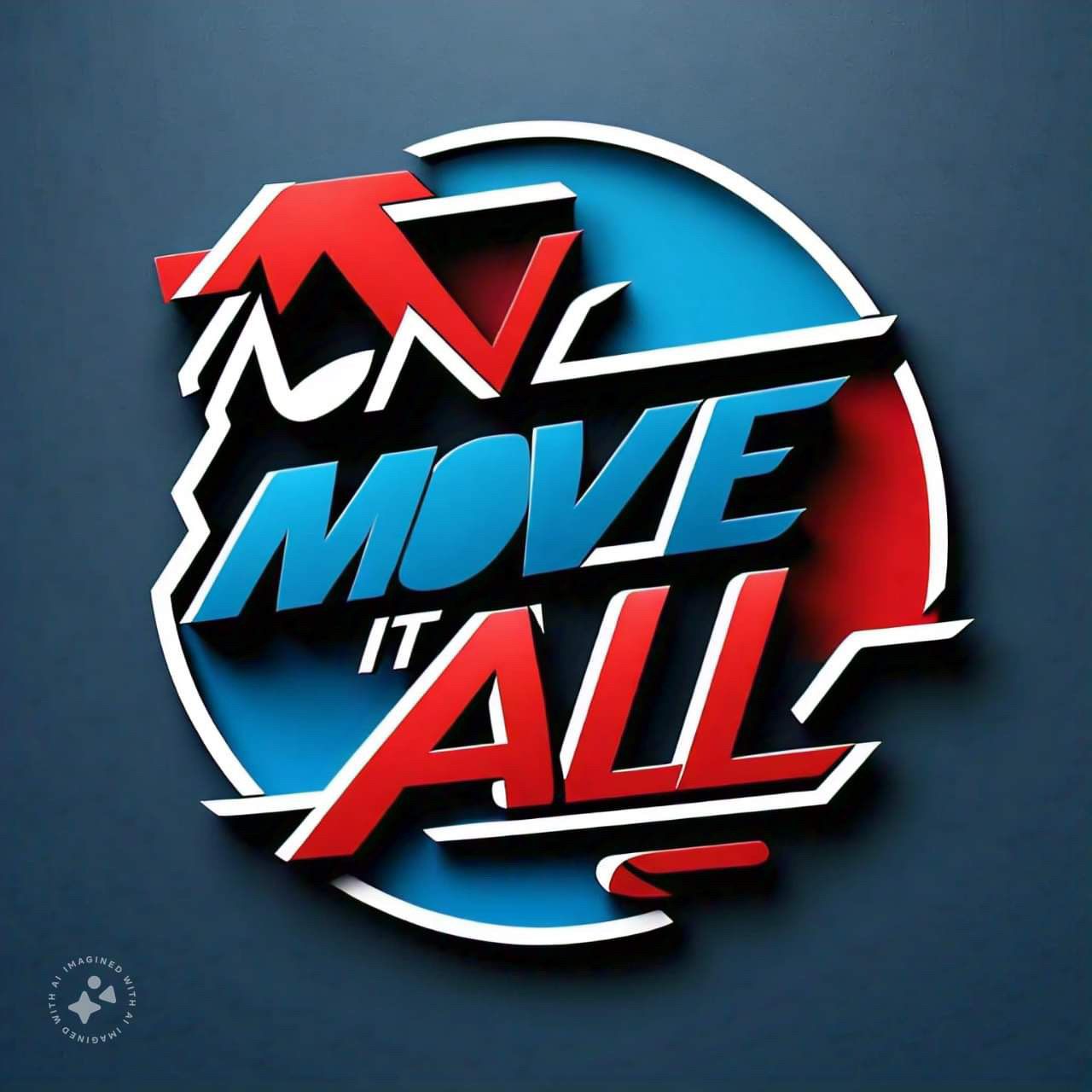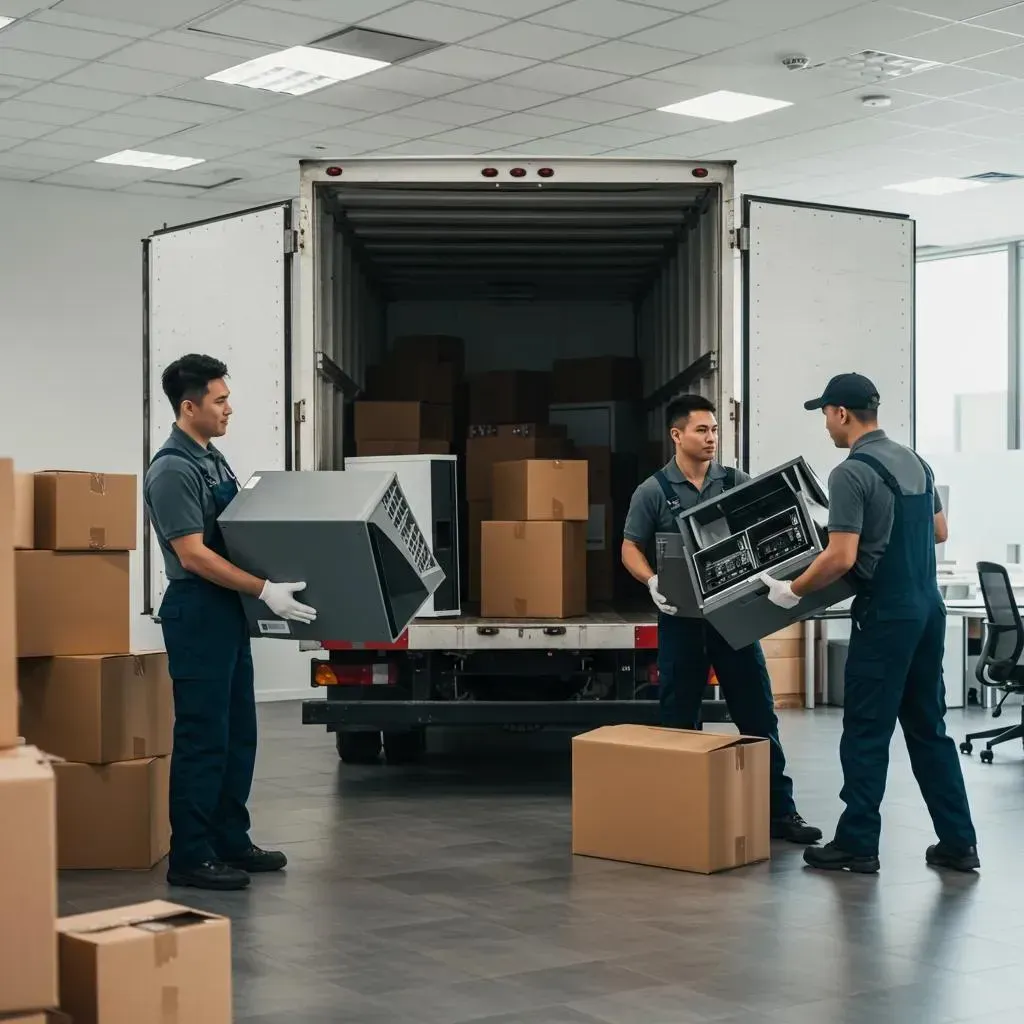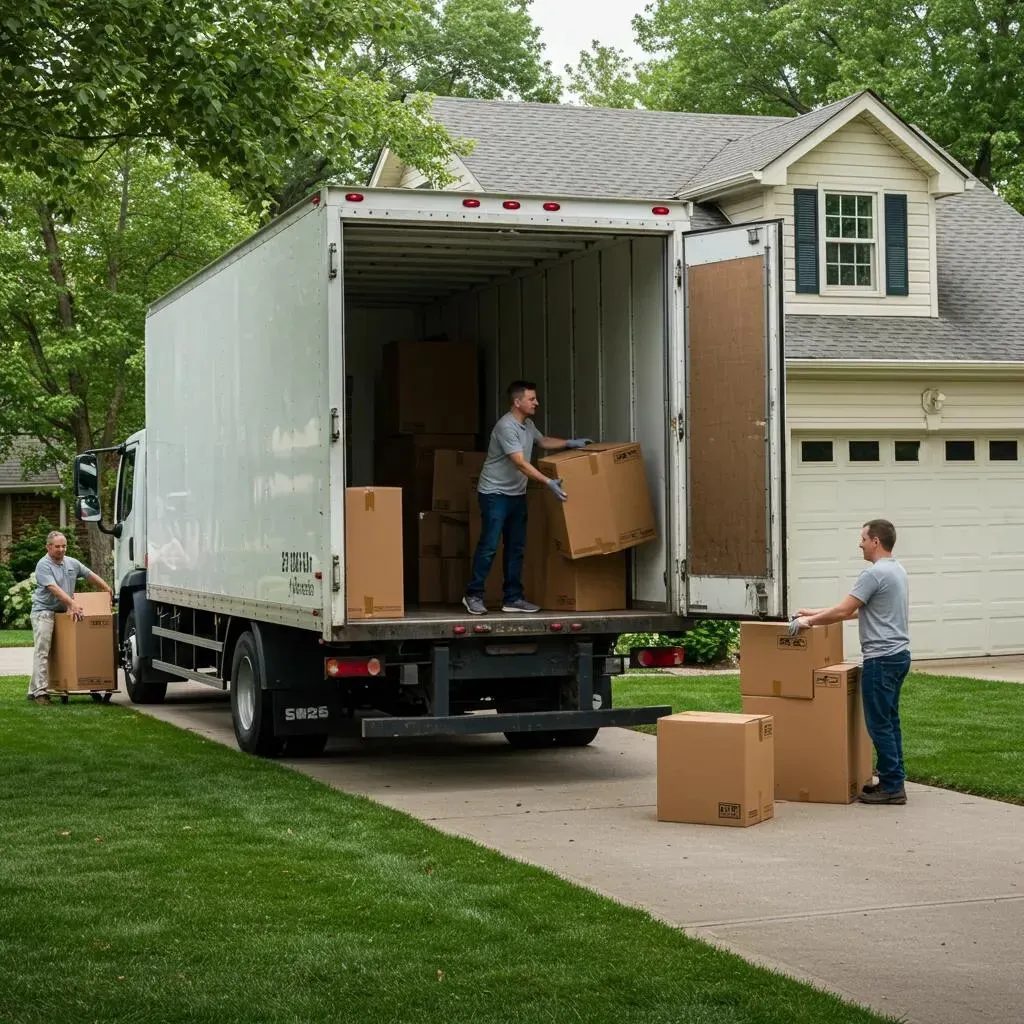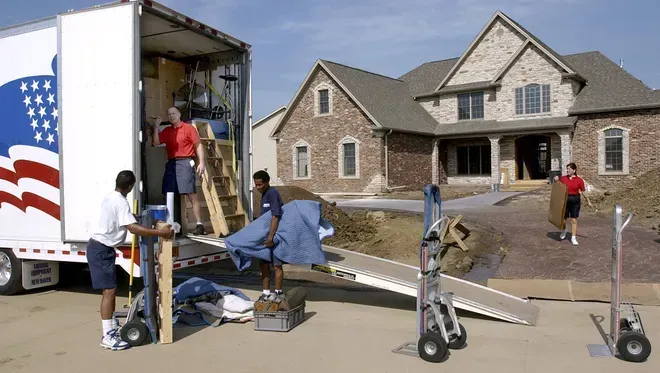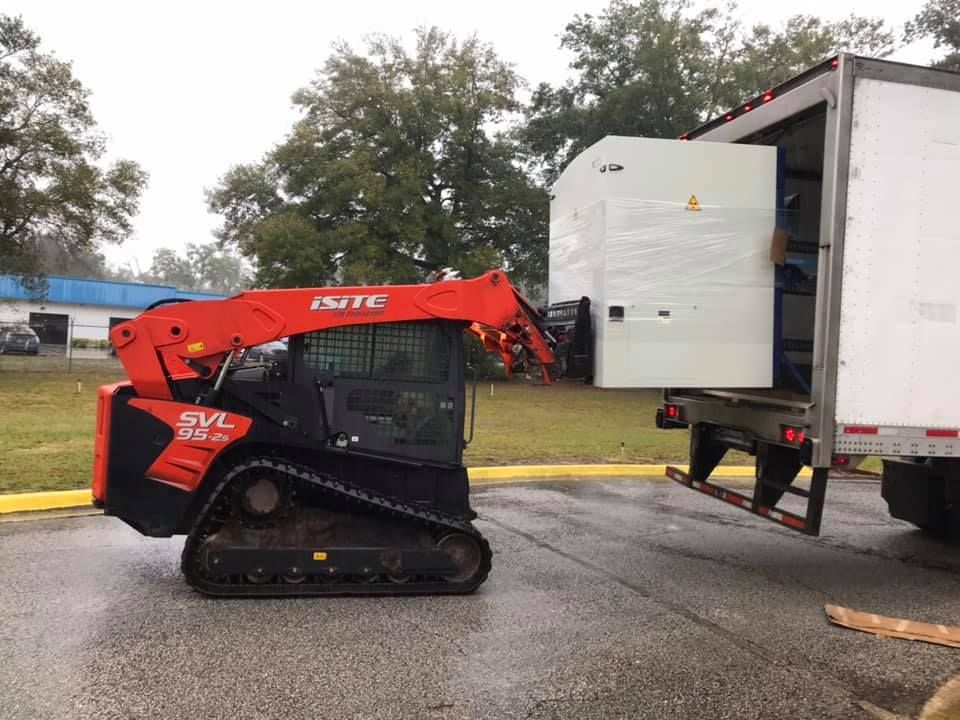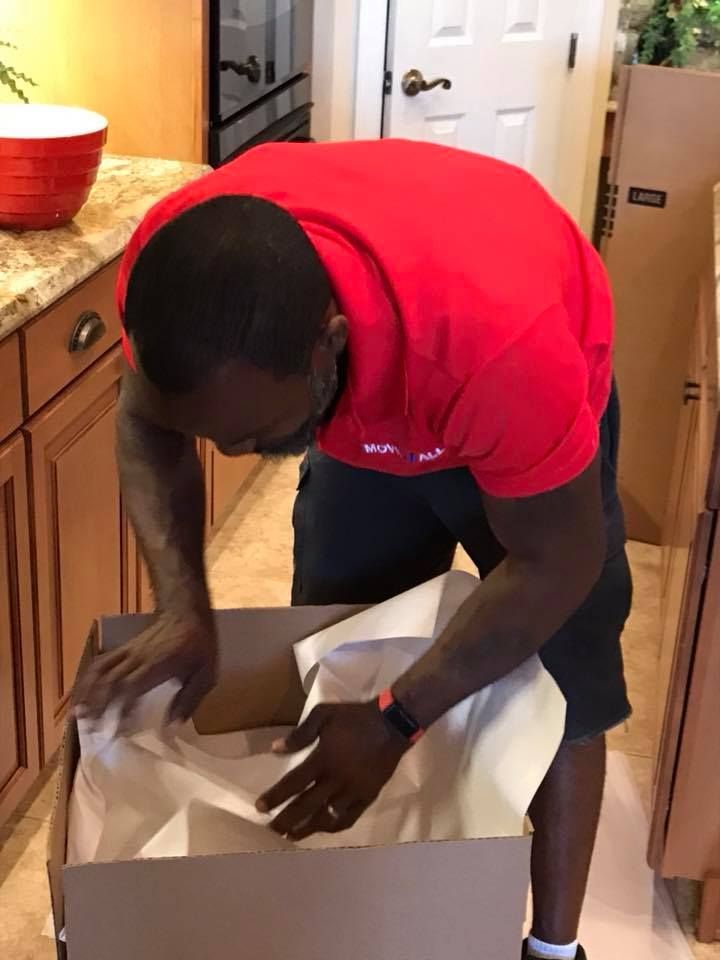BLOG
We Earned Their TRUST...
Now, Let Us Earn Yours!
Your Guide to Picking the Perfect Residential Moving Company: Key Factors for Your Move

Relocating to a new home can feel like a whirlwind, especially if you haven't thoroughly checked crucial details like licensing, transparent pricing, insurance, and overall reputation. To find the best residential moving company for your needs, you'll want to systematically look at their credentials, what other customers say, the types of estimates they offer, their insurance coverage, the scope of their services, how far you're moving, and any potential red flags. This guide will walk you through verifying licenses and accreditations, understanding the difference between binding and non-binding quotes, comparing insurance options, checking out packing and storage services, distinguishing between local and long-distance moves, and spotting warning signs of unreliable movers. We'll also show you how MOVE IT ALL's comprehensive residential moving services can make your move smooth and professional every step of the way. By the end, you'll be ready to get a detailed quote and ensure your relocation is seamless.
What Credentials and Licensing Should You Look For in a Residential Moving Company?
A moving company's credentials are your assurance of legal compliance, proper insurance, and professional accountability. They confirm that your move will meet federal and state regulations and that your belongings are protected. Verifying these credentials helps reduce your liability and builds trust before you even book their services. Here are the essential credentials every household should confirm before hiring a mover:
- USDOT Number Check – This is a unique number assigned by the Federal Motor Carrier Safety Administration to movers handling interstate moves. (fmcsa.dot.gov)
- State License Verification – This confirms the company has the necessary authorization to operate within your state for intrastate moves. (fmcsa.dot.gov)
- Proof of Liability Insurance – You'll want to see evidence of cargo and general liability insurance to protect against any damage or loss. (tricolongdistancemovers.com)
- Industry Association Memberships – Look for affiliations with reputable organizations like the American Moving and Storage Association or the Better Business Bureau.
Confirming these credentials helps you steer clear of unlicensed or uninsured operators and lays the groundwork for a dependable moving partnership.
Why Is It Crucial to Hire a Licensed and Insured Mover?
A licensed and insured mover means they adhere to safety standards, consumer protection laws, and financial responsibilities. Licensing confirms the company meets essential requirements for equipment maintenance, driver qualifications, and handling disputes. Insurance coverage shifts the risk from you to the moving company, ensuring you're compensated if your belongings are accidentally damaged, lost, or stolen. For instance, if a packing mishap leads to broken glassware or scratched furniture, it becomes a covered claim instead of an unexpected expense for you. Making sure your mover is properly credentialed protects both your possessions and your peace of mind.
How Can You Verify a Moving Company’s USDOT Number and State Licenses?
Start by getting the mover’s USDOT number and state license ID directly from their estimate or website. Then, follow these practical steps:
- Visit the FMCSA online database and search the USDOT number to confirm their registration status and safety record. (fmcsa.dot.gov)
- Go to your state’s transportation department website and enter the state license ID to check if it’s active and if there have been any past violations.
- Ask for printed copies of their insurance certificates and confirm the policy dates directly with the insurance provider.
- Keep written records of all verification details before you finalize your service booking.
These steps create a clear record that protects your interests and shows you've done your homework in selecting a compliant moving partner.
What Accreditations and Industry Affiliations Signal Reliability?
Belonging to industry organizations shows a mover's dedication to best practices and high customer service standards. The table below outlines leading accreditations and why they matter:
| Organization | Key Requirement | Why It's Important |
|---|---|---|
| Better Business Bureau (BBB) | Ethical business practices, effective complaint resolution | Indicates a commitment to customer satisfaction |
| American Moving & Storage Association (AMSA) | Adherence to national moving standards | Defines industry best practices for packing and transport |
| Federal Motor Carrier Safety Administration (FMCSA) | Federal registration for interstate transport | Ensures compliance with federal safety regulations |
Affiliations with these groups reinforce accountability and provide avenues for third-party support, increasing your confidence in your chosen moving partner.
How Do Customer Reviews and Reputation Impact Your Moving Company Choice?

Customer reviews offer real-world insights into a moving company's performance, highlighting their strengths and any recurring issues. A company's reputation is built on consistent service over time and sets your expectations for quality, communication, and how they handle problems. Examining both reviews and reputation helps you gauge their reliability, professionalism, and overall customer satisfaction.
What Can Customer Reviews Tell You About Service Quality and Reliability?
Reviews often mention how punctual the movers were, how carefully they handled fragile items, the professionalism of the crew, and how responsive they were to any issues. Positive feedback typically points to efficient packing methods, courteous staff, and accurate estimates. Negative comments might reveal hidden fees, damaged items, or late arrivals. By looking for patterns in review language—like frequent mentions of "on-time delivery" or "clear communication"—you can determine if a mover consistently meets key performance standards.
How to Evaluate Online Ratings on Google, BBB, and Yelp?
Before making a decision, compare the overall ratings and common themes in comments across different platforms:
- Google Reviews – A large user base provides star ratings and detailed personal accounts.
- BBB Ratings – These focus on how well the company handles and resolves complaints.
- Yelp Reviews – Often highlights local experiences and specific service stories.
| Platform | Rating Scale | What It Focuses On | How to Use It |
|---|---|---|---|
| Google Reviews | 1–5 stars | Overall satisfaction, range of services | Get a quick sense of general sentiment |
| BBB | A+ to F | Complaint history, business ethics | Assess their track record for resolving disputes |
| Yelp | 1–5 stars | Local service experiences | Identify trends in specific moving areas |
Why Are Case Studies and Testimonials Valuable for Assessing Movers?
Case studies and testimonials showcase successful moves, especially those involving unique situations like long-distance relocations, handling valuable antiques, or tight deadlines. They detail the challenges faced, the solutions provided, and customer feedback, demonstrating a mover's ability to solve problems. For example, a testimonial about a smooth piano move highlights their expertise with delicate items. Including real-life examples gives you a deeper understanding of their service quality and assures you they can handle specific moving needs.
What Are the Differences Between Binding and Non-Binding Moving Quotes?
Moving quotes set your expectations for costs and help manage your budget. A binding estimate locks in a final price, while a non-binding estimate gives you a cost range that might change based on factors like the actual weight or time involved. Understanding the type of estimate you receive is key to avoiding unexpected charges.
How Do Binding Estimates Protect You from Unexpected Moving Costs?
Binding estimates guarantee that your final bill won't go over the agreed-upon amount, no matter the actual weight of your shipment or how long the move takes. This approach significantly reduces financial uncertainty and allows for precise budgeting. For instance, if your move ends up being heavier than initially estimated, you'll still pay the original fixed price. Binding agreements encourage movers to be efficient and demonstrate transparency.
What Should You Expect from a Non-Binding Estimate?
Non-binding estimates are flexible projections based on initial assessments, such as an inventory list or photos of your belongings. The final cost could be higher or lower if the actual weight, volume, or labor differs from what was initially assumed. While these estimates might seem lower upfront, they carry the risk of increased charges if conditions change. It's important to get clear details about potential adjustments and the factors that influence the rate to see if this flexibility works for your budget.

How Does MOVE IT ALL Ensure Transparent and Accurate Moving Quotes?
MOVE IT ALL uses an in-home or virtual survey to accurately capture details about your inventory, room layouts, and any access challenges. This thorough process minimizes estimate variations and aligns expectations. A dedicated estimator carefully reviews each item's weight and packing complexity, then provides a binding or non-binding estimate with a clear breakdown of all costs. By offering written documentation for every charge, MOVE IT ALL builds confidence and prevents hidden fees.
Why Is Moving Insurance Crucial and What Coverage Options Should You Consider?
Moving insurance is your safeguard against damage, loss, or theft of your belongings during transit and storage. The available coverage options differ in how they value your items, their liability limits, and the claims process. Choosing the right protection minimizes your financial risk and ensures peace of mind throughout your move.
What Types of Moving Insurance Are Available: Full Value Protection vs. Released Value?
Moving companies typically offer two main levels of coverage:
- Full Value Protection: The mover takes full responsibility and covers the cost to repair, replace, or provide a cash settlement for any lost or damaged items.
- Released Value Protection: This is basic liability coverage based on the weight of your items, usually at a minimal rate (e.g., $0.60 per pound per item), offering limited reimbursement.
Full Value Protection provides comprehensive coverage and prioritizes customer satisfaction, while Released Value offers the minimum statutory protection at a lower cost.
How Does Moving Insurance Protect Your Belongings During Transit?
Insurance streamlines the claims process if any incidents occur. If damage happens, you'll submit documentation and evidence—like photos or inventory lists—to start the claim. The mover will work with their insurance provider to assess the value, arrange for repairs, or process replacements. This clear liability framework shifts the financial responsibility away from you and emphasizes accountability.
What Insurance and Liability Options Does MOVE IT ALL Provide?
MOVE IT ALL includes full value protection as the standard coverage for residential moves, ensuring that damaged items are replaced or repaired at their current market value. For those seeking a more budget-friendly option, Released Value Protection is also available, adhering to carrier minimums. Detailed policy summaries and information on the claims process are provided during the estimate phase, empowering you to make informed decisions about coverage that align with your comfort level for risk.
What Comprehensive Services Should a Full-Service Residential Moving Company Offer?
A full-service moving company should be able to manage every aspect of your relocation: packing, loading, transportation, unloading, unpacking, handling special items, and storage. Offering comprehensive services simplifies coordination, reduces stress, and boosts efficiency from beginning to end.
How Do Packing and Unpacking Services Simplify Your Move?
Professional packing teams use standardized techniques and high-quality materials—like sturdy boxes, protective padding, and clear labeling systems—to ensure fragile and valuable items are safe. When they arrive at your new home, the same crew will unpack your belongings and place them according to your layout, saving you significant time and physical effort. This complete support speeds up the settling-in process, allowing you to focus on enjoying your new home.
What Specialty Moving Services Are Available for Fragile or Valuable Items?
Specialty services are designed for complex items that require specific equipment and expertise:
- Piano and Organ Moving – Includes custom crating, specialized dollies, and hydraulic lifts.
- Antique and Fine Art Handling – Features climate-controlled crates, vibration-dampening materials, and white-glove service protocols.
- Glass and Electronics Protection – Offers tailored packaging, shock-absorbent materials, and secure transport racks.
How Can Storage Solutions Support Your Moving Timeline?
Secure storage options, available for both short-term and long-term needs, can accommodate transitional periods or accommodate renovation schedules. Climate-controlled units are ideal for protecting sensitive items from extreme humidity and temperatures, while standard units offer a cost-effective way to store furniture and boxes. Inventory management systems help keep track of your belongings, making retrieval easy and minimizing the chance of items getting misplaced.
How Does MOVE IT ALL Deliver Full-Service Moving Solutions?
MOVE IT ALL brings together all core and specialized services under one roof. From meticulous packing and careful handling of delicate items to secure storage and organized unpacking, their teams manage logistics and customer communication at every stage. This integrated approach reduces the need to coordinate with multiple vendors, speeds up project timelines, and enhances the overall moving experience.
How Do Local and Long-Distance Moves Differ and What Should You Consider?
Local moves and long-distance relocations have different logistical requirements, regulations, and cost structures. Understanding these distinctions will help you choose a mover that's properly equipped for your specific journey.
What Are the Key Differences Between Local and Long-Distance Residential Moves?
Local moves typically cover distances of less than 100 miles and are governed by state regulations, often priced hourly or with a flat rate. Long-distance moves cross state lines, requiring federal registration, weight-based estimates, and adherence to interstate safety standards. Transit times, fuel surcharges, and route planning become more complex for long-distance moves, affecting both cost and scheduling.
How Do State and Federal Regulations Impact Interstate Moves?
Interstate moves are overseen by the Federal Motor Carrier Safety Administration (FMCSA). Moving companies must register with the FMCSA, possess a valid USDOT number, and comply with rules regarding cargo securement, driver hours of service, and consumer protection disclosures. These regulations are in place to protect your rights, ensure clear contract terms, and define liability, promoting transparency across state lines.
How Does MOVE IT ALL Handle Both Local and Long-Distance Moving Needs?
As a fully licensed and insured mover, MOVE IT ALL complies with both state and federal regulations for any residential relocation. Their project managers handle route planning, secure necessary permits, and manage logistics like fuel and tolls. Whether your move is across town or across the country, the same professional teams apply consistent protocols, ensuring a seamless experience from pickup to delivery.
What Red Flags Should You Watch Out For When Hiring a Residential Moving Company?
Recognizing warning signs of unreliable movers can help you avoid scams, hidden fees, and poor service. Staying vigilant protects you from stress and financial loss.
What Are Common Signs of Unlicensed or Fraudulent Movers?
Be aware of these indicators:
- They don't have a USDOT number or refuse to provide their licensing information.
- They lack a physical address or only use P.O. boxes instead of a legitimate office location.
- They demand large cash deposits before the service begins.
- Their contracts are blank or missing crucial liability terms.
Identifying these red flags helps you avoid unethical operators.
How Can You Avoid High-Pressure Sales and Unusually Low Quotes?
Reputable movers will provide clear, written estimates without pressuring you to commit immediately. Quotes that seem unusually low often hide extra charges for fuel, labor, or packing materials. Always insist on written documentation for all costs, ask about potential rate adjustments, and compare at least three different estimates to identify any unreasonable offers. This careful approach helps deter high-pressure tactics and ensures fair pricing.
What Steps Does MOVE IT ALL Take to Ensure Trust and Transparency?
MOVE IT ALL builds trust through open communication, detailed written estimates, and clearly defined contract terms. Their team explains every service component, discusses insurance options, and clarifies any potential factors that could affect the rate. By maintaining open dialogue, providing both digital and printed documentation, and responding promptly to questions, MOVE IT ALL upholds ethical practices and fosters lasting customer confidence.
Moving with confidence starts with evaluating credentials, reviewing reputation, understanding quotes, securing insurance, assessing full-service options, distinguishing between move types, and recognizing potential warning signs.
With this guide and MOVE IT ALL's expertise, you can confidently request a personalized quote and begin a stress-free relocation experience.
Contact the MOVE IT ALL team today to schedule your comprehensive moving consultation and secure a binding estimate tailored to your needs.
